Nearby Interaction Demo with an iPhone
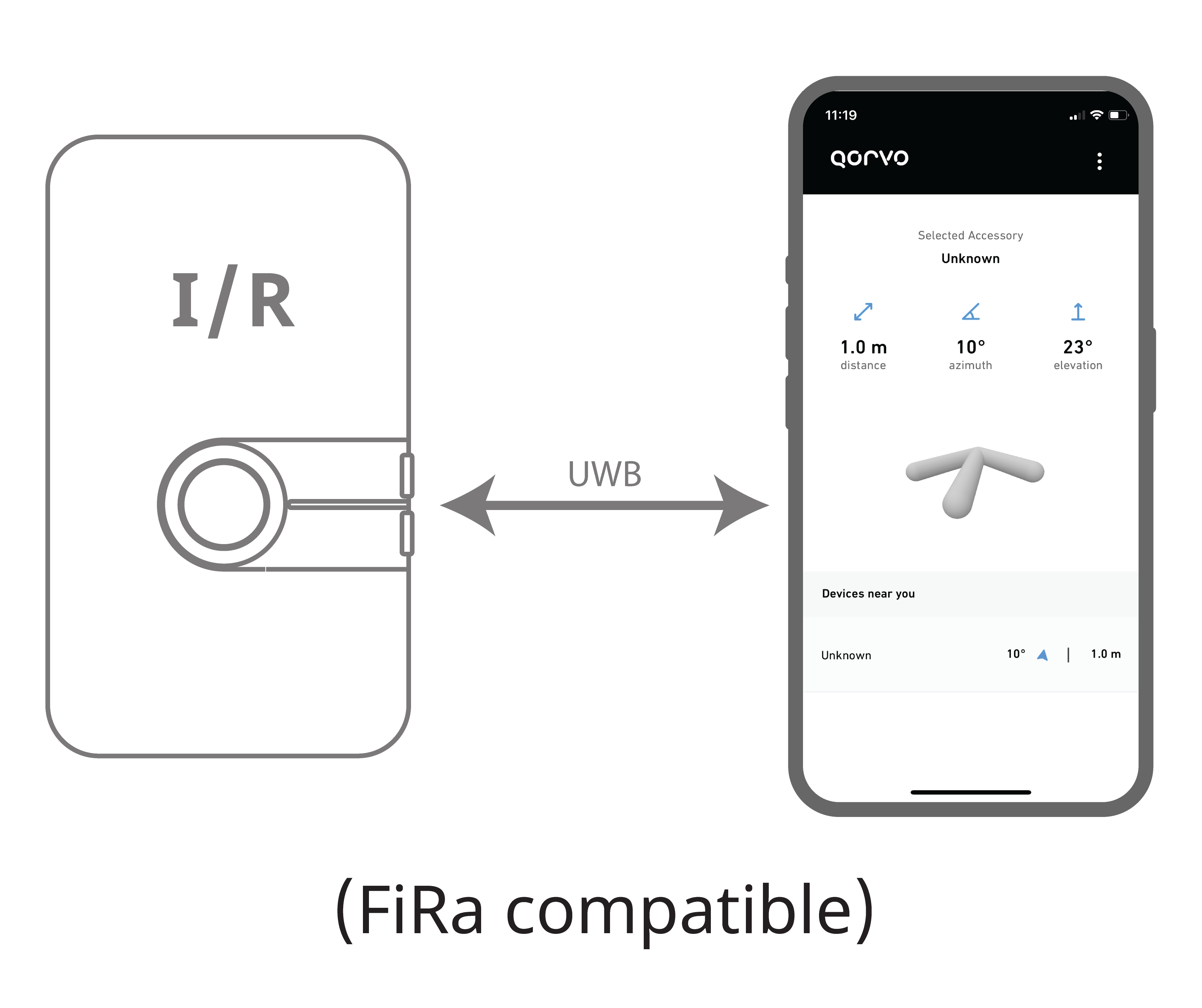
Prepare for setup
Qorvo Nearby Interaction (foreground mode) or Qorvo NI Background application installed on the iPhone (model: iPhone 11, 12 & 13).
At least one LC14 (white) device.
Optional: LEAPS Manager application installed.
Optional: batteries for the devices.
Setup time: less than 5 minutes
Overview
This setup demonstrates Nearby Interaction and FiRa compatibility with a smartphone. Distance and angle measurement shows the accessory’s direction in the smartphone application.
Typical applications: Find my things, follow me, smart remote control, access control.
Setup instructions
Download and install the following application on iPhone.
Qorvo Nearby Interaction application (foreground mode).
Qorvo NI Background application (background mode).
Power ON one or more LC14 (white) devices.
The LC14(s) will function as an accessory in the QNI (Qorvo Nearby Interaction) demo.
Configure the device into the QNI mode using one of the following options:
Configure the device using the button.
3.1. Press and hold the Button B until you hear a beep sound and the BLUE LED blinks.
3.2. If a RED or GREEN color appears, please repeat step a.
3.3. When the device blinks BLUE LED after the beep sound, the device is configured in the QNI mode.
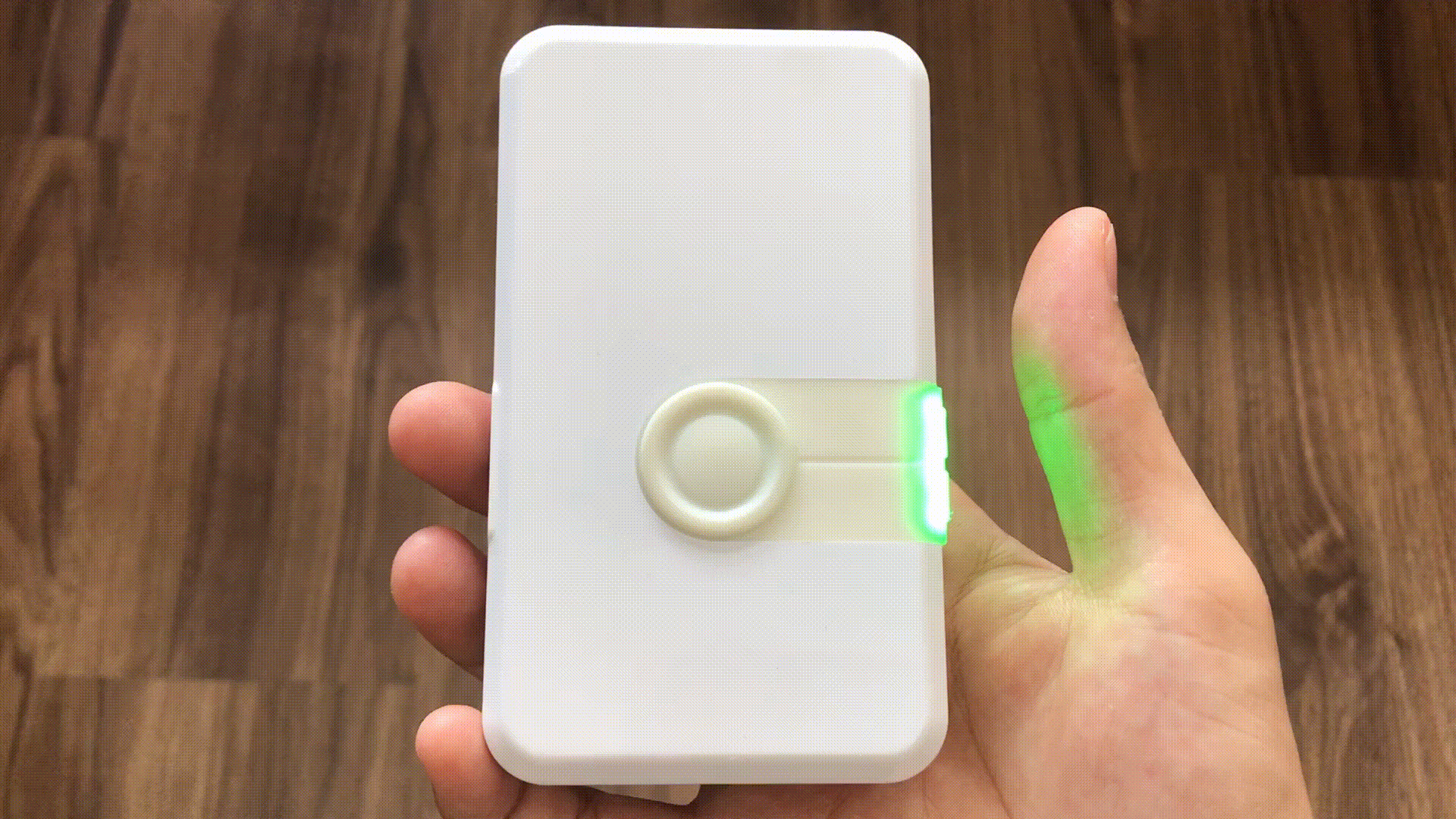
Configure using the demo selector in the LEAPS Manager:.
3.1. Open the LEAPS Manager and select the Demo Selector from the main page.
3.2. Select the Nearby Interaction with an iPhone.
3.3. A list of discovered devices via Bluetooth will appear on the list. Swipe down to update the list if needed.
3.4. Select the devices that will be used for the QNI demo. The Required devices on the top side indicate the amount of devices needed for the demo.
3.5. Press the SAVE to configure the device(s) into the QNI mode.
3.6. Please check visually that the BLUE LED blinks when the device starts.
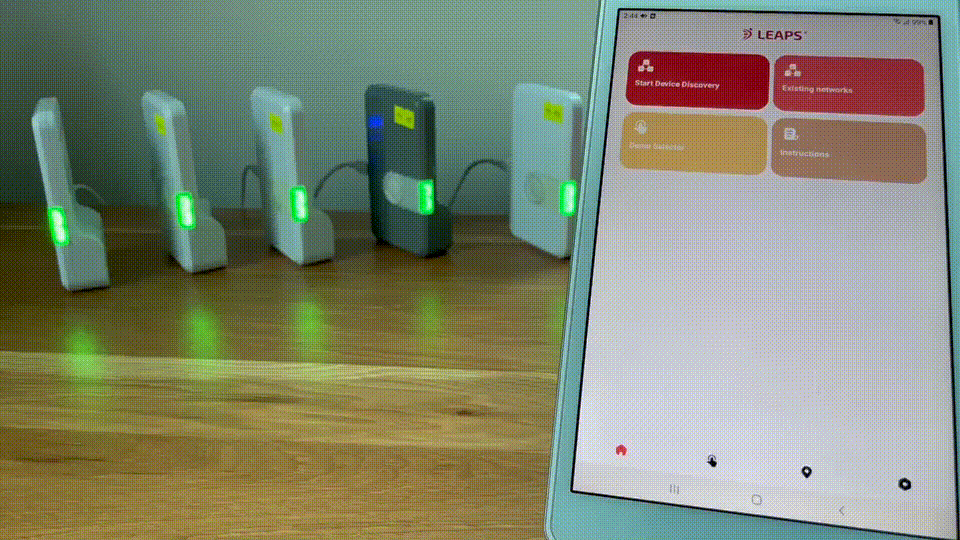
Open the Qorvo Nearby Interaction or Qorvo NI Background application on your iPhone.
Immediately after opening the Qorvo Nearby Interaction application, it will scan for nearby accessories using the QNI BLE service.
When a QNI accessory is found and added to the list. Please select and connect to the accessory that you want to start the Nearby Interaction with. Multiple connections are supported.

Nearby Interaction Background mode requires the accessory to be paired with the iPhone device.
When connecting with a device for the first time and, when the application starts a NI session for the first time it will request user’s approval to use the Nearby Interaction.
Once the accessory is paired with the iPhone, no more pairing and permission access is required during future interaction between the accessory and the iPhone.
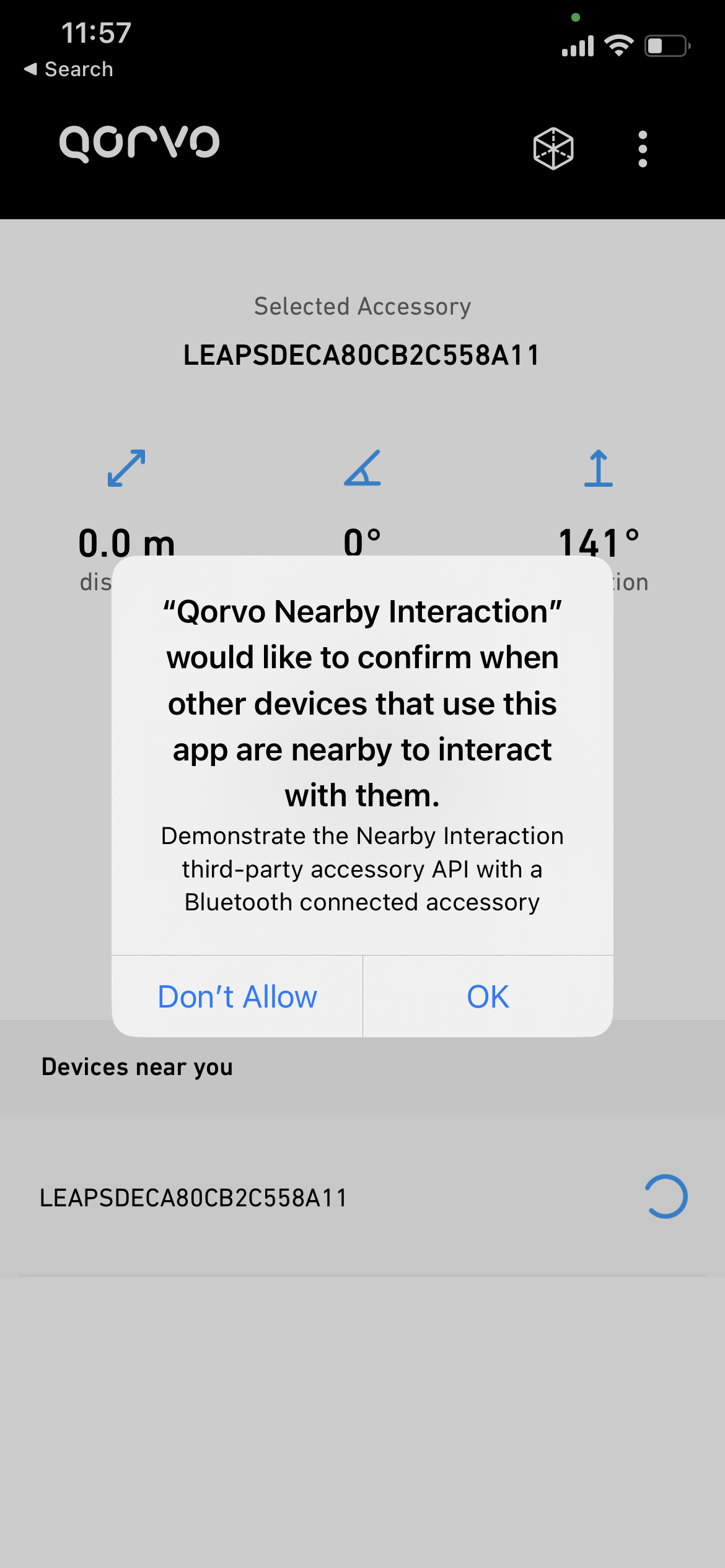
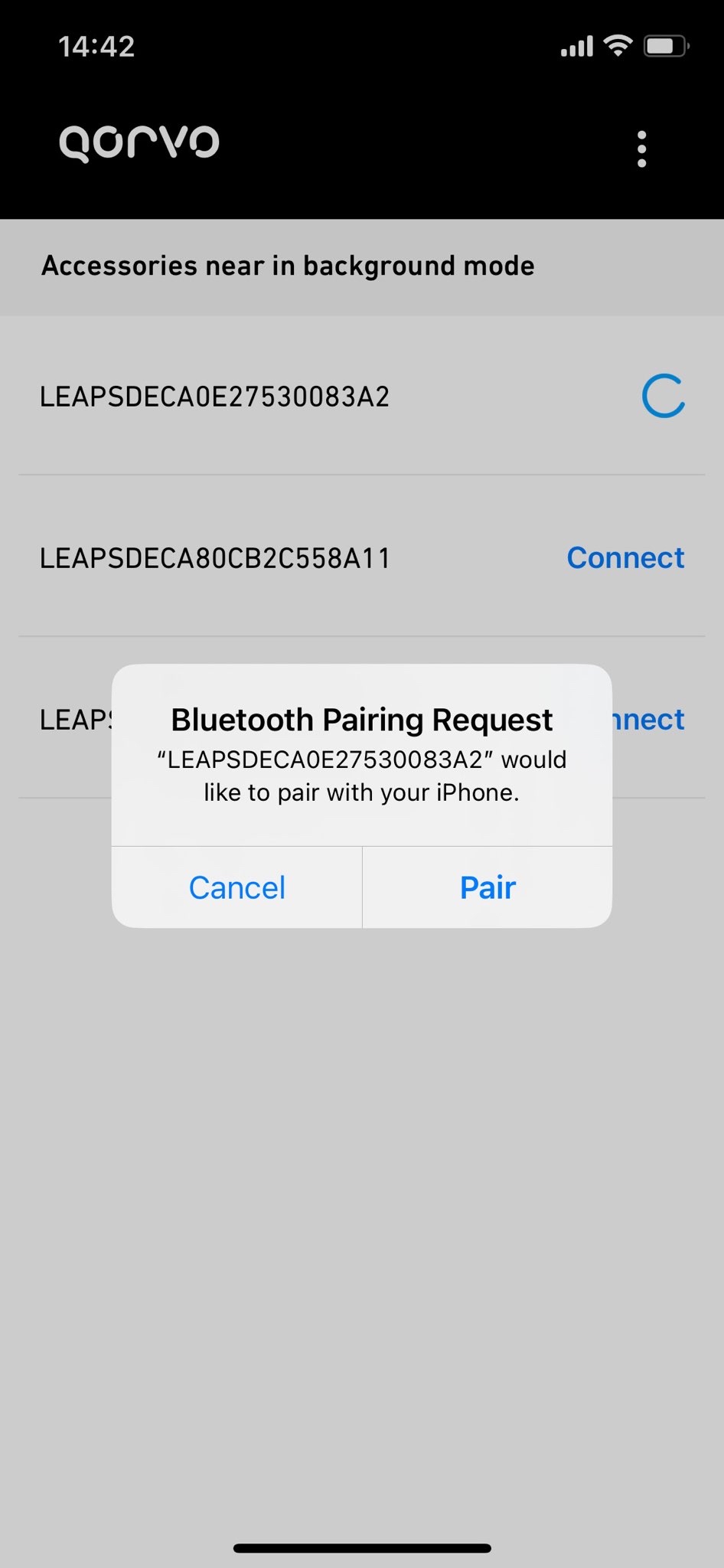
The iPhone will start ranging with the accessory and display the measured distances between the iPhone and the accessory after every ranging round.
In the case of the Qorvo NI Background application, which uses the NI Background mode, the update rate is lower, 1/3 compared to the NI Foreground mode. The ranging would happen in the background even when the display is turned off on the iPhone.
In the case of the Qorvo Nearby Interaction application, which uses the NI Foreground mode, will also display the angle and direction from the iPhone to the accessory. The measured values are from the iPhone perspective. As you change the device’s orientation, the application can also provide an augmented view to locate the accessory using the iPhone camera and display.
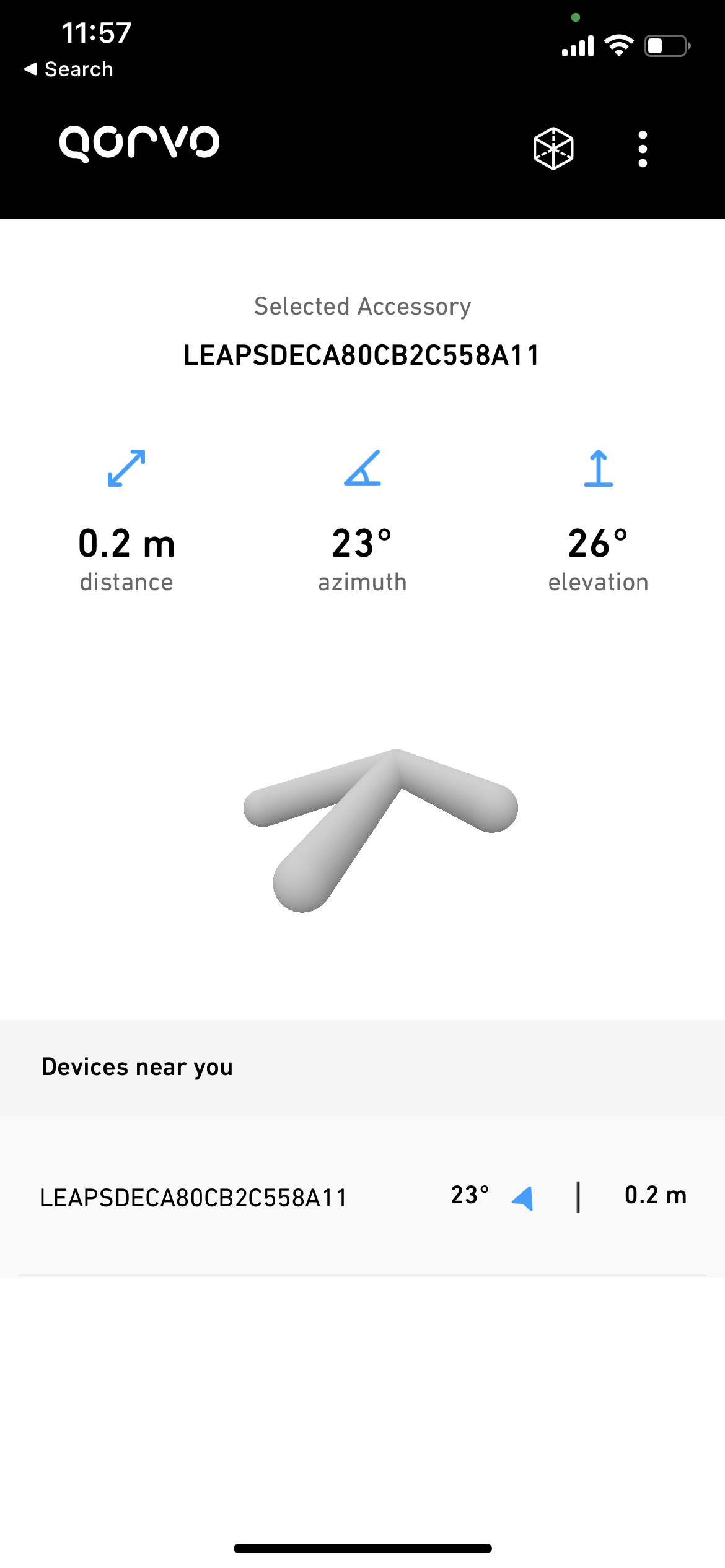
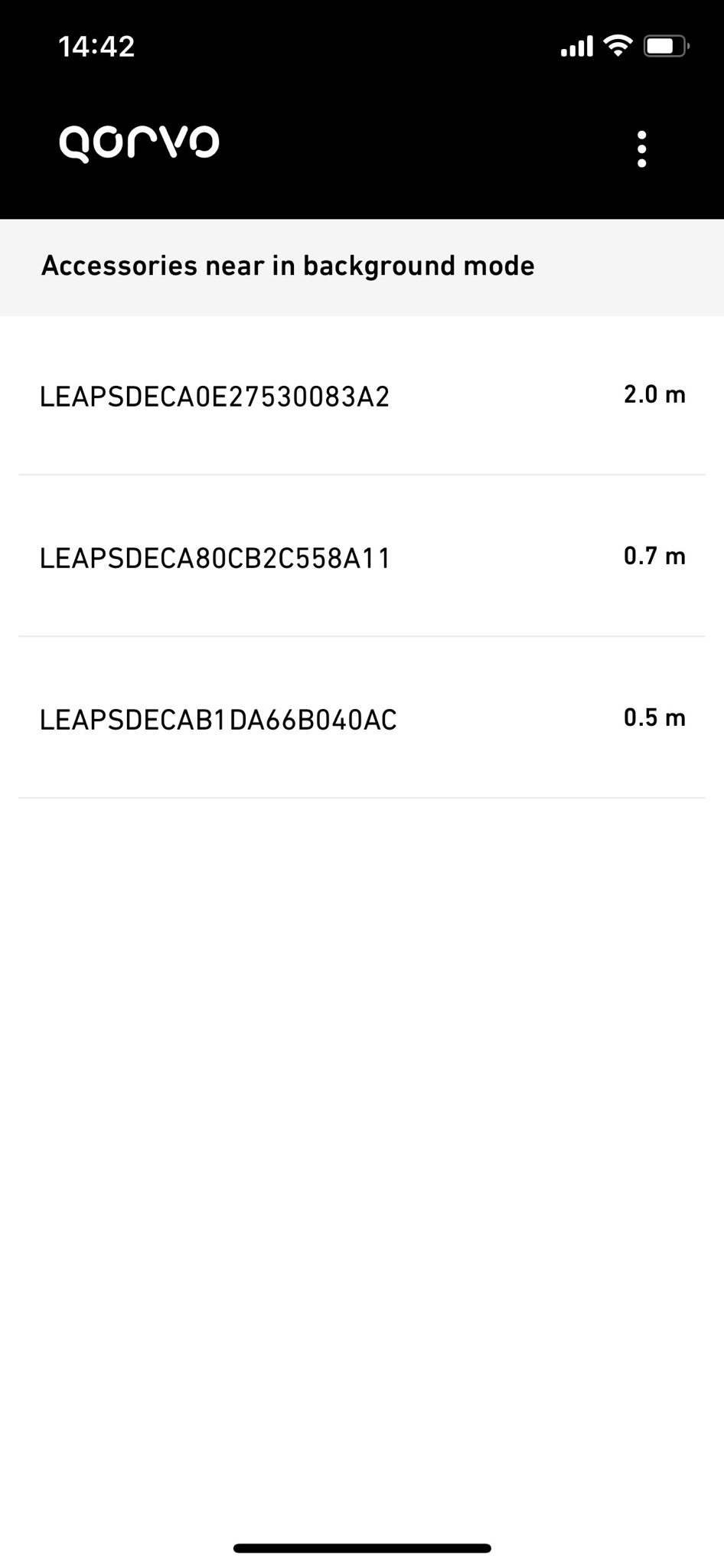
Please refer to the Qorvo Nearby Interaction or Qorvo NI Background application for more details.
Advanced setup
Get ready for the advanced setup! We’ll tap into the terminal’s power to help you configure your device like a pro. Just follow these steps and you’ll be all set.
Use a USB-C Data Cable to connect the USB-C Data Port 1 or USB-C Data Port 2 of devices to your PC.
Connect to a serial port using your desired terminal application, such as Putty, Teraterm, Minicom, or your favorite terminal application. We need to configure the baud rate to 115200.
For example use Minicom, on Ubuntu (Linux):
minicom -b 115200 -D /dev/ttyACM0
Press double enter on the shell console to access the command line control system
For example open /dev/ttyACM0 and press double enter, on Ubuntu (Linux):
minicom -b 115200 -D /dev/ttyACM0 Welcome to minicom 2.7.1 OPTIONS: I18n Compiled on Dec 23 2019, 02:06:26. Port /dev/ttyACM0, 16:02:57 Press CTRL-A Z for help on special keys Low Energy Accurate Positioning System FOR DEMO PURPOSE ONLY, NOT FOR SALE. Copyright : 2016-2023 LEAPS License : Please visit https://www.leapslabs.com/leaps-rtls-license Compiled : Jan 6 2024 09:38:07 (v0.15.0-ab84fb) Help : ? or help leaps>
Use the command fniq to update Nearby Interaction mode.
Low Energy Accurate Positioning System FOR DEMO PURPOSE ONLY, NOT FOR SALE. Copyright : 2016-2023 LEAPS License : Please visit https://www.leapslabs.com/leaps-rtls-license Compiled : Jan 6 2024 09:38:07 (v0.15.0-ab84fb) Help : ? or help leaps> leaps> fniqAt that time, please check visually that the BLUE LED blinks when the device starts.
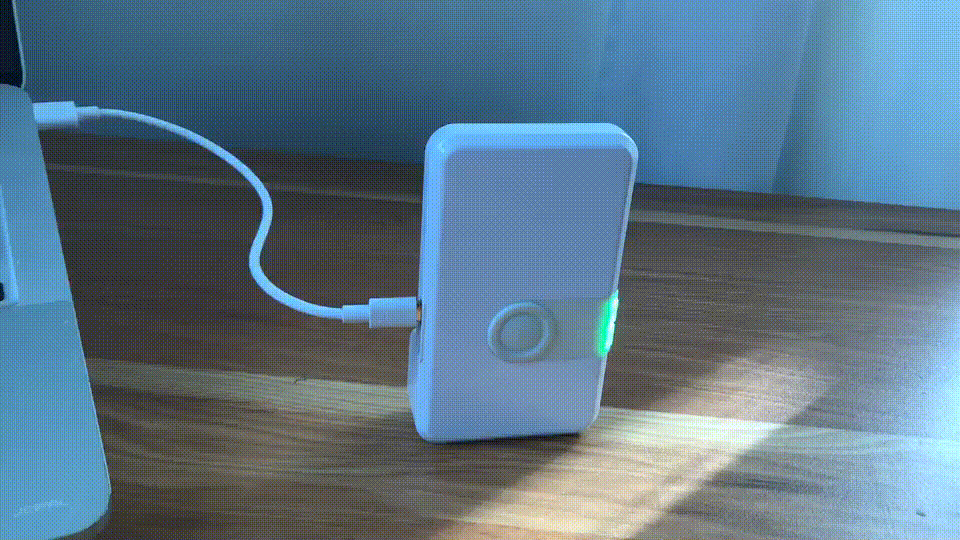
Now successfully configured QNI mode, refer to the next steps on Quick Start.
When Bluetooth Low Energy (BLE) and the LED are both off, users may erroneously perceive the board as non-functional. In this scenario, the only recourse for the user is to initiate a Factory Reset (frst) command.
Here are some tips for fixing some issues related to the installation process.
Please check the version. We recommend you use the latest official version.
Use the Reset devices to default feature in Demo Selector on the LEAPS Manager when you don’t know the current state of the devices. Refer to the following GIF Image.
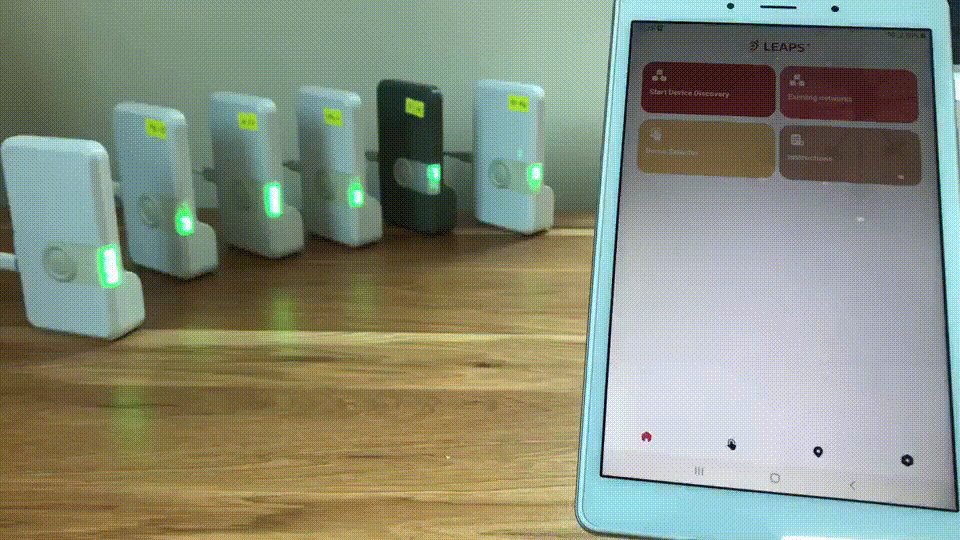
Note
For any comments or questions about our products, we encourage you to visit our LEAPS Forum.
For detail of known limitation and issue list, please refer section Releases.
